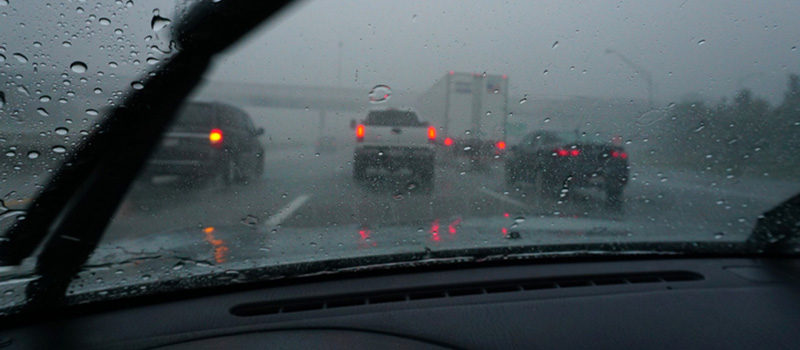Tips for Driving in Inclement Weather
Tips for Driving in Inclement Weather

Tips for Driving in Inclement Weather
From ice and snow to rising floodwaters, inclement weather can take many different forms. These extreme weather events can also present an equally wide range of risks to drivers who are on the road during inclement weather.
The best way to stay safe when the weather takes a turn for the worse is to stay home and avoid going out on the road. For one reason or another, though, this sometimes isn't an option. If you get caught behind the wheel in dangerous weather conditions, here are safety tips to consider.
Driving Safely in Rain
Rain is the inclement weather condition with which drivers can likely have the most experience. However, even light rain can sometimes create dangerous driving conditions. Heavy downpours, meanwhile, present even more serious risks.
Remember that your vehicle is likely to handle differently when roads are wet and its best to maintain a little extra distance between yourself and other vehicles. If you encounter any areas of flooding where the road is no longer visible, do not attempt to drive through it. According to the National Highway Traffic Safety Administration (NHTSA), it only takes 12 inches of rushing water to carry away most cars.
You should also bear in mind that thunderstorms carrying heavy rain tend to bring high winds as well. Anytime you are driving during heavy winds, whether it's raining or not, you should keep a firm grip on the wheel to correct any movement the wind causes. You should also keep an eye out for tree limbs and other debris that may have blown into the road.
Driving Safely in Ice and Snow
Icy roads are one of the most dangerous driving conditions, given that ice on the roads is often impossible to see and can cause drivers to completely lose control of their vehicles.
If you realize that the roads are icy, stay calm, avoid touching your brakes, and slowly reduce your speed by easing off the accelerator. While slamming the brake may be your first instinct when you feel your vehicle start to slide on icy roads, any use of brakes at all will only make the loss of control even worse. Instead, steer gently to correct the skid, and avoid jerking the steering wheel.
Driving in snow is not nearly as risky as driving when roads are icy, but snow on the road can still cause your vehicle to get a little less traction than usual. For this reason, you should reduce your speed and maintain a longer following distance when driving in snow.
Driving Safely in Fog
Unlike driving in rain or snow, driving through heavy fog won't impact your vehicle's handling as much. What it can do, though, is decrease your visibility to a dangerous degree. When driving in heavy fog, slow down to give yourself more reaction time and turn on your low-beam headlights. Though it may sound counterintuitive, you should avoid using your high-beam headlights in heavy fog since it will cause glare that further reduces visibility. In cases of extreme fog where your visibility is near zero, you should pull over to a safe location, turn on your hazard lights, and wait for the fog to clear.
Content on this page is designed for general information and/or entertainment purposes. It is not intended to provide legal or any other type of advice and is not meant to be a thorough discussion of every issue that a person should consider or may encounter. Unless expressly referenced, we are not affiliated with any company or app that may be referenced herein and we do not endorse them. We are not responsible or liable for the user's reliance on this content or for the availability of links to other websites or resources, or for advertising, products, services or other materials on or available through these websites or resources. Any reference to third party rates or products is for identification only and is subject to change without notice.
